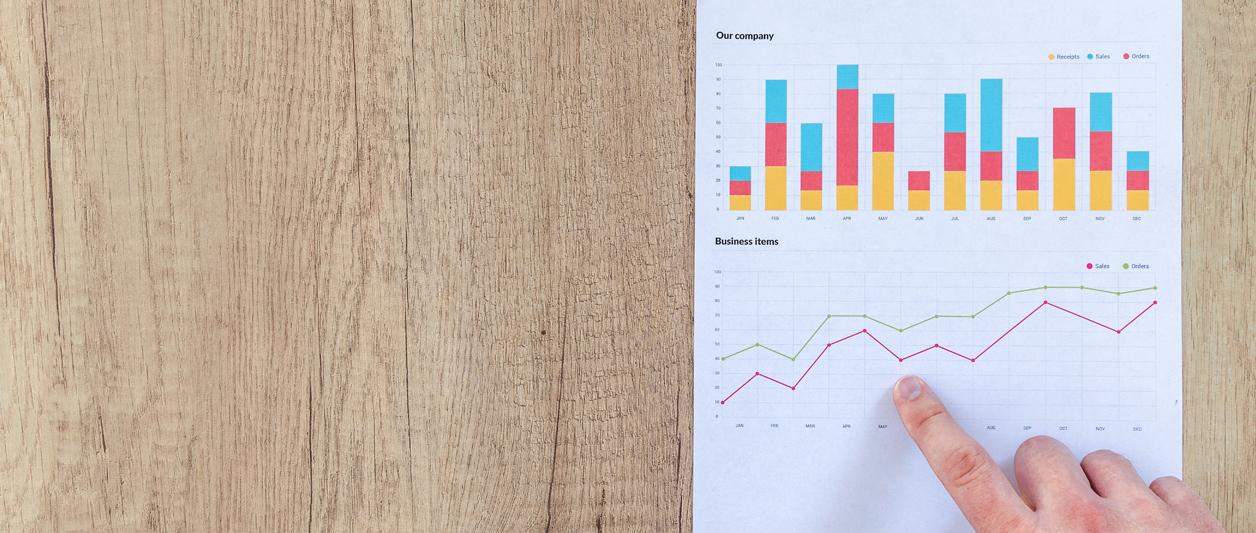
There's an expectation that the food and beverage industry will grow to be a $105.7 billion one in the next two years. There's limited space on store shelves and products or service offerings that companies may offer consumers. Competition to be one of the select few that rises to the top and becomes the go-to brand for consumers is fierce.
It's imperative that you employ marketing strategies that increase your food and beverage company's brand recognition as you aim to remain competitive in this industry. Digital marketing initiatives that have aided trailblazers in drink and food service or hospitality industries in expanding their reach include:
Building a Compelling Website That Conveys Your Brand Story
While it may be shocking to hear in 2022, studies show that at least half of all businesses don't have a website. This means that these companies are missing out on sales opportunities left and right.
Your website not only serves as a virtual placeholder for your business but also offers an opportunity for consumers to gain:
Insight into your brand story, including your mission and people
In-depth information about your products and services and initiate purchases- View customer or client reviews.
- Find reliable information that can be used in contacting your company or engaging with it through social media and other approaches.
- Blogs can showcase a company's authority in a niche industry.
In fact, research shows that 79% of food blog readers place a high level of trust in what they read. Some 80% or more of consumers enjoy getting to know behind-the-scenes details about how a company operates
You can think of your website as a first impression. The picture you paint of your brand on your website, the breadth of functionality it offers, its ease of use, and the degree and promptness of communication exchanged through the website set the tone for what customers can expect in engaging with you on a deeper level.
Websites also allow companies to set in motion the sales funnel, especially if they include email opt-ins to receive freebies, including promotional offers, newsletters, e-books, or an opportunity to schedule a discovery call.
Also, a well-designed e-commerce store on a website can help you reach a wider customer base than you otherwise would be able to if exclusively selling offline. Plus, an online store gives you an option for reaching customers 24/7.
How Social Media Amplifies Your Food and Beverage Brand's Reach
Social media is one of the most cost-efficient and wide-reaching approaches food and beverage companies use for generating enthusiasm surrounding their brand aside from building and capitalizing on the use of their website. Statistics surrounding the use of social media to share food and beverage branded material show that:
- An estimated 60% of the most liked brands on Facebook are food or beverage ones.
- At least 19% of consumers admit to being inspired by food and beverage brand social media meal postings.
- Just over 30% of shared tweets on Twitter are associated with food and beverage companies.
Consumers don't just use social media only in searching for inspiration or to share interesting information with their peers, though. This platform provides companies with ample opportunity for those in the food and beverage industry to push aspects of their brand story to the forefront, such as new product or service offerings and for customers to generate their own content that amplifies manufacturer or distributor marketing efforts.
What's more, social media offers a variety of advertising opportunities, which can be deployed so that they target certain target demographics. It's also possible for brands to partner together, furthering their when using social media platforms.
Other Increasingly Popular Marketing Measures That Drive Sales
Additional approaches that have become ever-important parts of forwarding company branding in recent years include:
Setting up a Google My Business Profile
At least 64% of consumers perform Google searches to find company information. Indexing your business and optimizing its online presence ensures that your company ranks highly over competitors.
Ensuring a Reputation Management Infrastructure is in Place
No matter whether one's talking about Google reviews, product reviews on third-party sites, or customer testimonials on your own, statistics show that at least 91% of your prospective food and beverage company consumers and clients are reading them. It's not only important for you to have a workflow in place for soliciting this valuable consumer feedback but also a reputation management strategy in place for identifying valuable insight from customers and responding to often-inevitable negative reviews.
How YouTube is Becoming Increasingly Critical for Branding
As previously discussed, the landscape has become more and more competitive for food and beverage companies in recent years and is only expected to become more competitive in the future. Consumers are increasingly looking for brands to engage them on their preferred platforms, and studies show that at least 86% of millennial consumers source info about food and beverage brands on YouTube. No matter what you're posting, whether it's an advertisement, recipe, or tips and tricks for using their product, it's important that you dedicate at least some effort to amplifying your YouTube presence with fresh and nuanced content. Sponsored content that allows for peer reviews of products can also be quite influential in forwarding your brand.
There is no shortage of ways food and beverage companies have attempted to expand their digital efforts to ensure they meet sales goals in the past few years. Our talented staff here at Dotlogics is well-versed in all things branding. We can help you build out the related technology infrastructure and implement the software programs necessary to help improve the recognition of your brand and amplify your sales. Contact us to schedule a meeting where we can discuss your most pressing obstacles, and we can share our strategies for making them a thing of the past.
Let's Get to Work.
Have an unsolvable problem or audacious idea?
